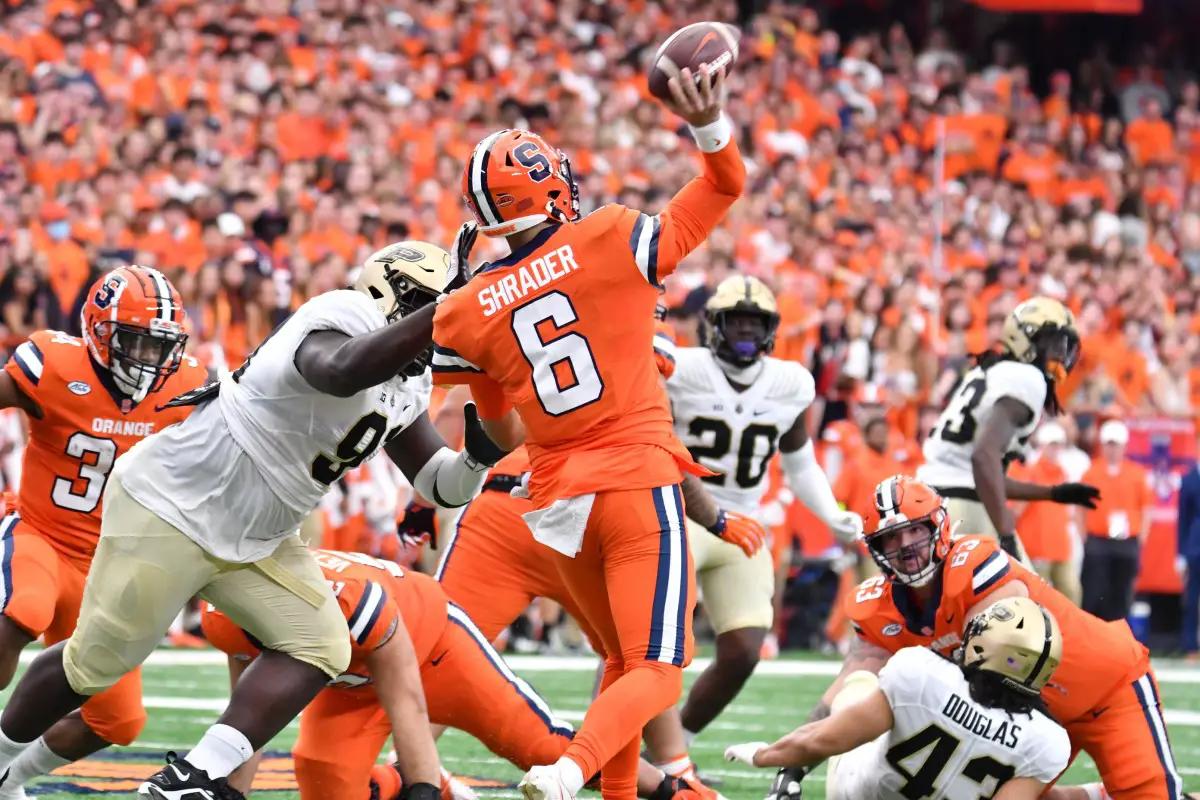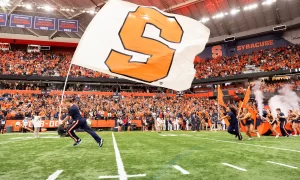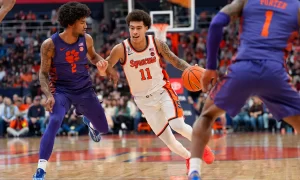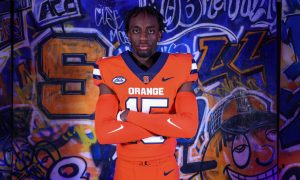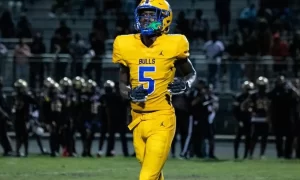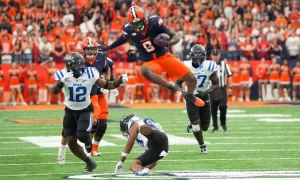Garrett Shrader took a massive leap forward last year. The numbers prove that, with the QB throwing for 1,200 more yards than he did the year prior, while his touchdowns jumped by eight and his interceptions only by three.
His yards per attempt mark was 8.3 after it mired at 6.2 in his first season as a starter for Syracuse, and his completion percentage was nearly 65% after posting a 53% mark the year prior.
There were individual games where he even looked like one of the best quarterbacks in the conference. Against Boston College in the regular season finale, he completed over 75% of his passes for 285 yards, two touchdowns and no interceptions. Those types of numbers seemed impossible the year prior, especially from the accuracy standpoint.
There were, however, some clunkers as well, namely throwing for just 100 total yards on 30 combined passes in losses to Notre Dame and Florida State. There is a reason for that though, it being a mid-season ankle injury he struggled through and even missed the Pitt game because of. In every other game (when he was healthy), he was always at least serviceable. He may have not always been the reason why the Orange won, but he was never the reason why they lost.
Last season should certainly be characterized as a successful one for Shrader, which begs the question of what success looks like this year. Step one is health. Obviously, that’s not entirely in his control, but as a quarterback who likes to run, Shrader needs to protect himself.
Syracuse has had to use its backup quarterback every year since Ryan Nassib left a decade ago. That pattern not repeating itself would go a long way towards both individual success for Shrader and for the team as a whole.
Beyond that, consistency is the key. Shrader’s best games last year came against Boston College, one of the worst teams in the ACC, a non-power five team in UConn, and an FCS team in Wagner that hadn’t won a game in three years at the time the Orange played the Seahawks.
Against Clemson, Shrader only threw for 167 yards. Against NC State, he threw two interceptions. Against Purdue, while he had his moments late in that game, he completed less than half of his passes.
This year, it’ll be one thing for Shrader to succeed against the likes of Colgate, Western Michigan and Army early in the season. At this point in his development, that should be a given. The same applies in games later on in the year against teams expected to finish towards the bottom of the conference like Virginia Tech, Georgia Tech, BC and Wake Forest.
If he wants to take the next step, he has to excel in Syracuse’s gauntlet against Clemson, North Carolina and Florida State.
That’s obviously easier said than done. All of those teams will have a massive talent advantage over Syracuse and Shrader has one established receiver (Oronde Gadsden), a running back who everyone thinks will be good (LeQuint Allen) and question marks everywhere else offensively, plus a first year play caller in offensive coordinator Jason Beck.
However, great quarterbacks elevate everyone around them, both on the field and off. It’s partly his responsibility to grow the depth in the receiving corps behind Gadsden, to make it easier on a young offensive line with his athleticism and to be a weapon that Beck can deploy effectively.
It won’t take stats to know what a good season looks like from Shrader. The eye test will tell you everything you need to know. Is his decision making continuing to improve and speed up? Has his arm gotten stronger? Is his ball placement better? Can he do it against top competition? All questions that will be answered and determine how successful of a season, and maybe what kind of a future, Shrader has.


